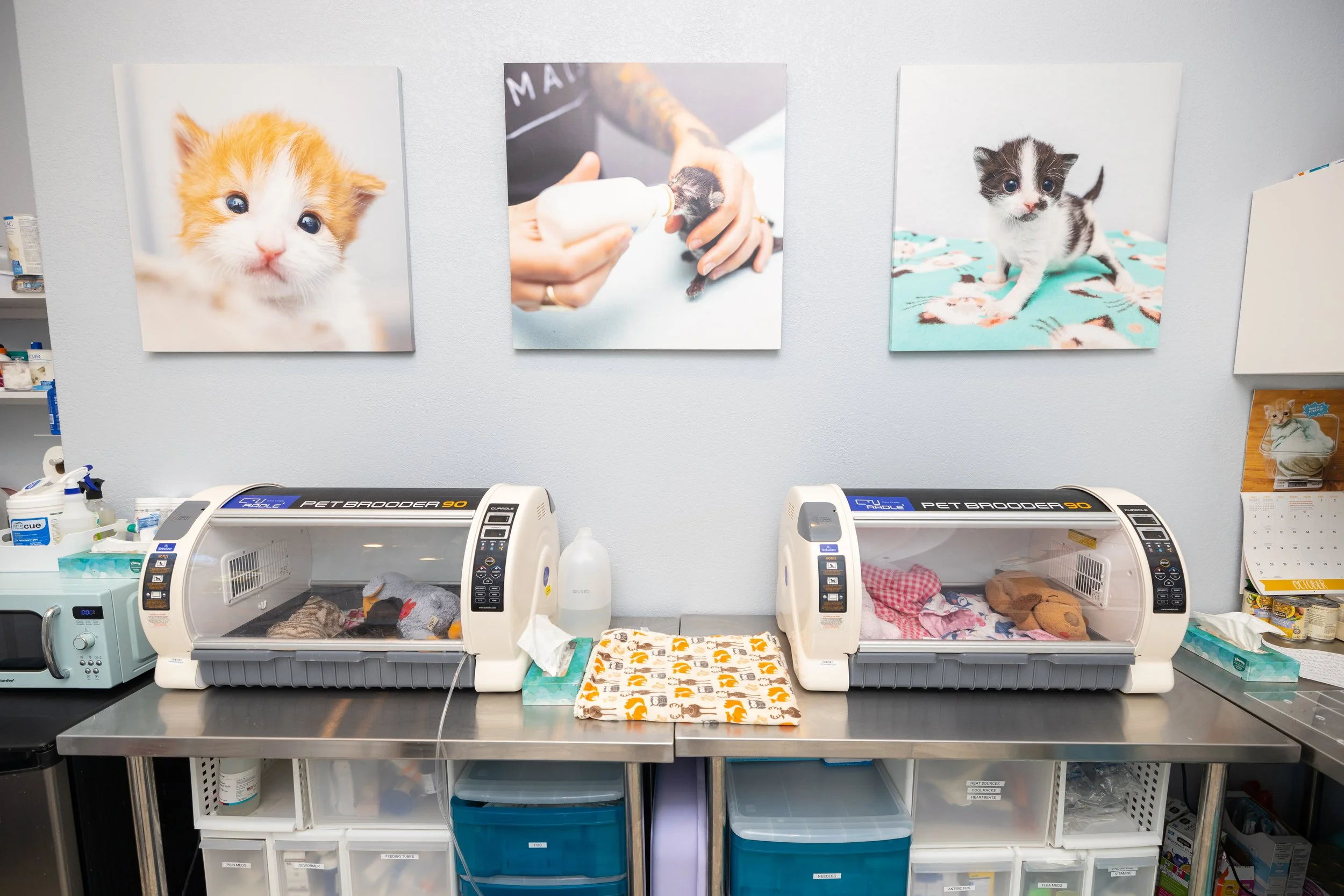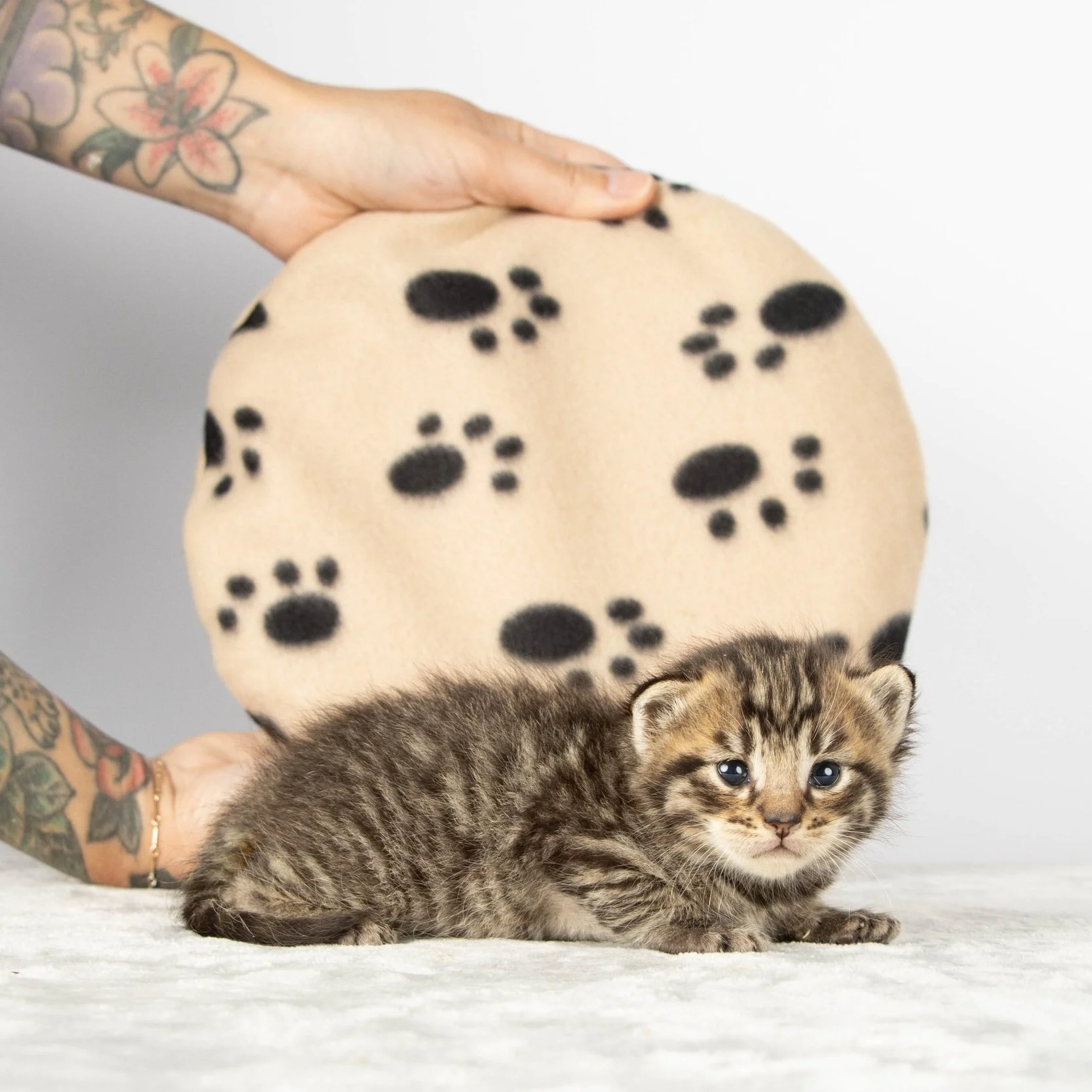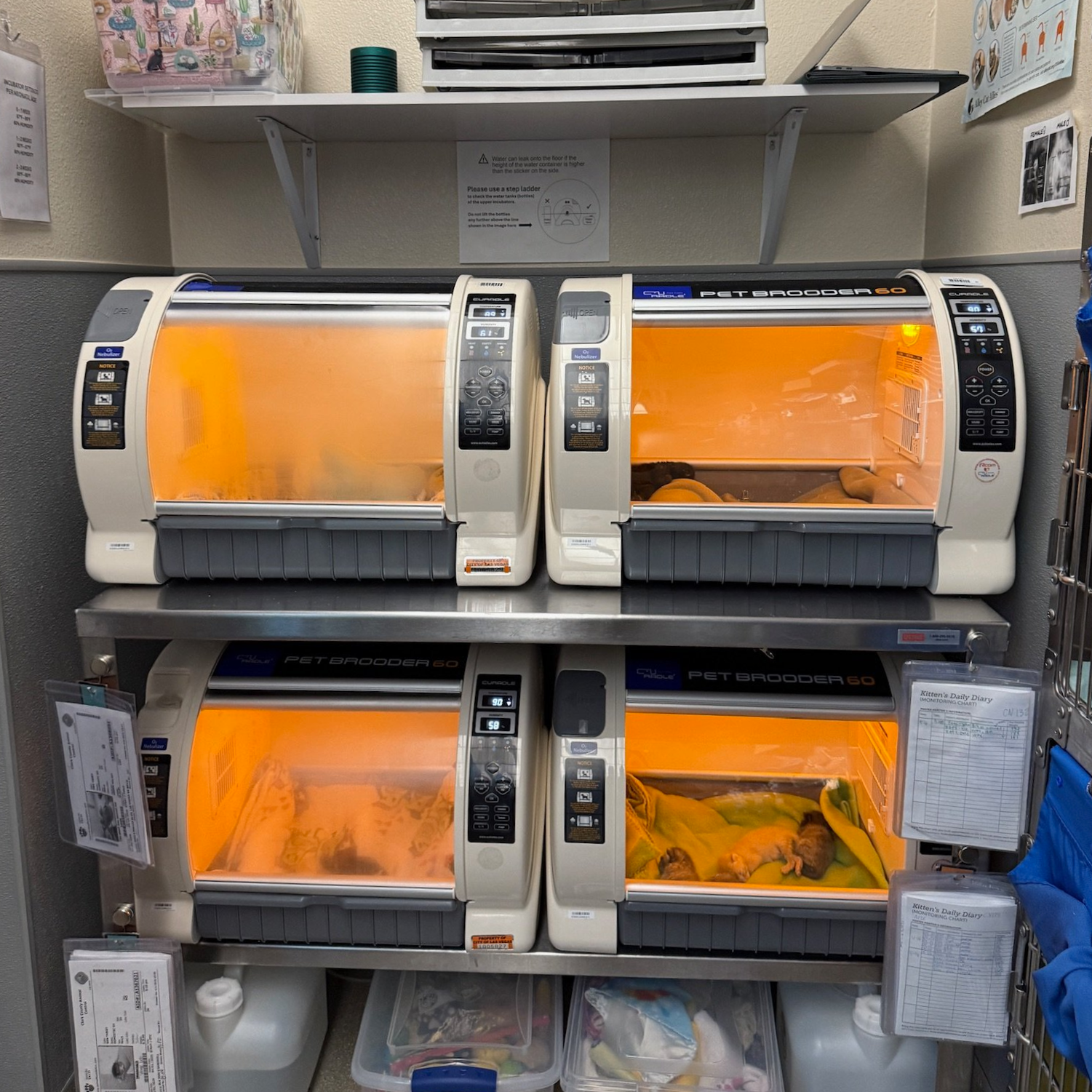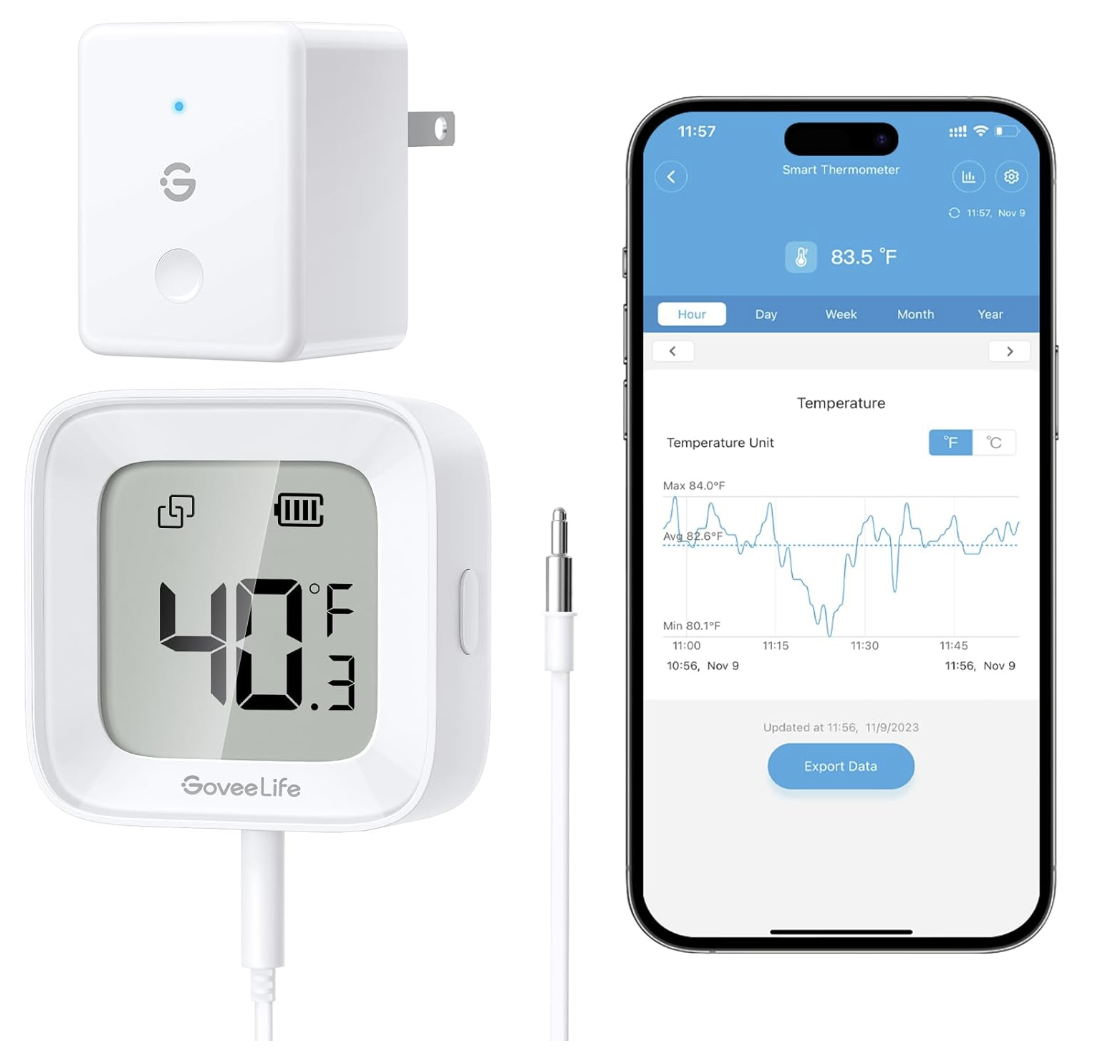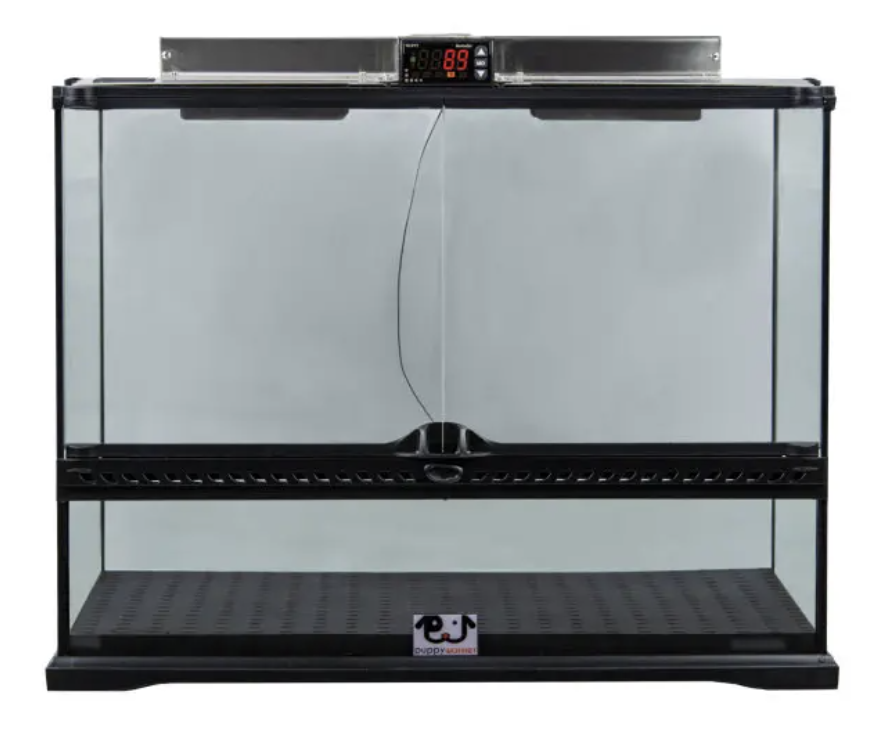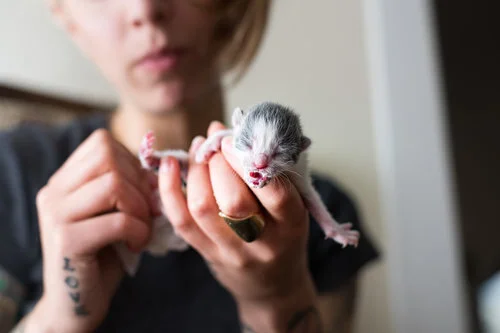How to Use a Kitten Incubator
Neonatal kittens are the most vulnerable animals in the sheltering system, relying on foster parents to provide them with nutrition, safety, and warmth. One of the most critical elements of care is thermoregulation: keeping them warm enough to survive. In this article, we’ll explore the role of incubators in kitten care, how to use them safely, and when they are (and are not!) necessary.
You Don’t Need an Incubator to Foster Kittens
Fostering kittens does not require an incubator. In fact, I didn’t get my first one until I’d been fostering kittens for nearly a decade and founded Orphan Kitten Club! For foster parents, a heat disk works perfectly well, and is both more portable and affordable while having largely the same effect on the kitten. Read my article on heat sources for more information on recommended options.
As tempting as it might seem to blow your budget on an incubator, I caution foster parents not to focus too much on the need for this large, bulky, expensive and unnecessary appliance. $1000+ can go a long way to help kittens, and caregivers are advised to focus their budget around more important lifesaving tools like diagnostics and timely medical care, which can have a much greater impact on a kitten’s likelihood of survival than the type of heat source you provide.
A Snuggle Safe is an affordable, portable heat disk best suited for foster parents and organizations caring for large volumes of kittens.
Incubators are large, expensive and best suited for hospitals, shelters and kitten nurseries.
An incubator is best suited for professional kitten care settings such as hospitals, shelters, and nursery facilities. These organizations may have one or several incubators reserved for the smallest and sickest, while other kittens in their care will use a heat pad. Foster parents should only consider investing in an incubator if funding and space allow, and if regularly caring for orphaned 0-3 week old kittens.
How Does an Incubator Work?
An incubator is a closed unit that draws external air in through a filtration system, adjusts it to the desired settings, and circulates it evenly throughout the chamber. Users can set the target temperature and humidity, and built-in sensors will monitor and adjust just like a thermostat in a home. Let’s take a closer look at how each component works:
Air Filtration: The incubator pulls in room air through a replaceable filter, removing dust, dander, and other particles. This helps protect fragile kittens from some airborne pathogens and keeps the environment as clean as possible—especially important for immune-compromised neonates. Filters can be disinfected or changed between litters, and should always be changed after being exposed to highly infectious disease such as panleukopenia or ringworm.
Temperature Control: Heating elements inside the incubator work in tandem with fans and sensors to maintain a consistent temperature throughout the chamber.
Humidity Regulation: Many incubators allow you to attach tubing to a bottle of distilled water, turning it into a humidification system. This adds moisture to the air, which helps prevent dehydration, supports respiratory health, and protects the skin from drying out due to constant warm airflow. Humidity is typically set around 55–65% for neonatal kittens. Distilled water is advised.
Accessory Ports: Some models come equipped with sealed ports for devices like nebulizers or oxygen concentrators. These can be useful in some medical cases, allowing additional treatments without exposing the kittens to open air or fluctuating conditions.
Learn about incubators in my instructional video:
How to Use an Incubator
Incubators are appropriate for kittens who are:
Premature
Under 3 weeks old and orphaned
Being treated for serious illness and/or struggling to maintain a healthy temperature
The following incubator settings are advised based on veterinary literature and current best practices from Kitten Lady and Orphan Kitten Club:
Humidity settings: 55-60% at all ages
Temperature settings:
0–1 week old: 87–90°F (30.5–32.2°C)
1–2 weeks old: 85–87°F (29.4–30.5°C)
2–3 weeks old: 80–85°F (26.7–29.4°C)
Temperature should be gradually lowered as kittens age and develop thermoregulation abilities. Around 3 weeks of age, it’s typically appropriate to remove the kitten from the incubator and house them in a small playpen with a heat disk to promote increased mobility. At 4 weeks of age, most kittens no longer require a heat source unless they are sick, underweight, or being cared for in an area with a cool room temperature.
Always use a secondary external thermometer when housing kittens in an incubator. Some thermometers can even link to an app to alert you if the temperature is outside of your target range. All products run the risk of failure, so having a backup is an essential failsafe!
Disinfection and Maintenance
Incubators should be kept impeccably sanitary to protect kittens’ fragile immune systems and prevent the spread of infectious disease. Each day, you’ll want to replace any soiled bedding, clean any waste, and disinfect with a kitten-safe disinfectant.
Between litters, fully disinfect your incubator:
Take apart the components of the incubator, removing any doors, trays, covers, etc.
Clean each part using soapy water to remove visible waste or debris.
Spray each part with Rescue Disinfectant and allow the product to sit for the recommended contact time before wiping it dry.
Replace the air filter, especially if the previous litter had a contagious condition.
Check the water reservoir to ensure it’s clean & only using distilled water—never tap water, which can leave residue or promote mold.
Calibrate internal sensors if needed.
Looking for an example? Watch this video to see an incubator disinfection after panleukopenia exposure.
Picking the Right Incubator
Incubators are not created equal, and picking the wrong one can be dangerous or deadly for your kitten.
Minimum Standards for a Kitten Incubator
Adequate size: should be large enough to allow for age-appropriate mobility including movement, stretching, repositioning, and moving towards and away from a stuffed animal or littermate—ideally no smaller than 24”x16”x16”.
Precise temperature control: should have a digital thermostat with user-defined temperature settings (not simply low/med/high or a heat lamp with a knob.)
Appropriate ventilation, circulation and filtration: should allow for safe air exchange, and make use of filtered air intake and air circulation to keep conditions sanitary and stable.
WARNING: Do not buy a cheap incubator! Walmart, Amazon and other retailers are starting to sell “kitten incubators” that could easily kill a kitten. If it looks like a plastic box with a heat lamp, DO NOT purchase. Watch my video about these dangerous products to learn what to avoid.
Instead, opt for an incubator from a reliable, reputable brand.
Recommended Incubators:
The RCOM Curadle Pet Brooders are my incubator of choice, and are commonly used in hospitals and kitten-focused shelters. Pick the 60 for smaller litters or the 90 for a more spacious option (I use both, but prefer the 90 which allows plenty of room for a large litter, a stuffed animal and even a small cozy hut.)
While Brinsea is not a brand I have personally used in my nursery, it has a good reputation within kitten shelter programs and meets my standards for a safe incubator. Opt for a larger model as seen here; they make a TLC-30 model that is too small to comfortably house kittens.
I don’t have personal experience using the Puppywarmer incubator, but it’s used by reputable clinics and organizations and the 18x24 option could be an appropriate option for a litter of kittens.
Don’t Forget:
You don’t need an incubator to foster kittens. Refer to my list of heat sources to find affordable, effective options for kittens that can play a huge role in saving their lives!
Want to help kittens in shelters access safe heat sources? Support Orphan Kitten Club’s Heat Wave donation drive!

